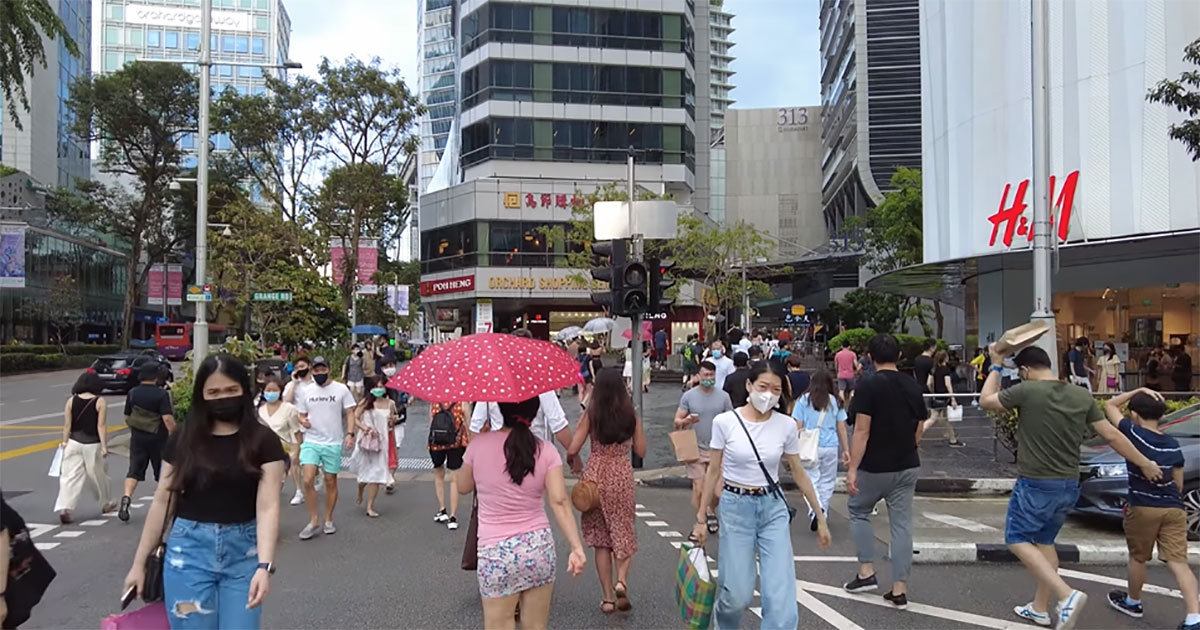Singapore’s total population between 2010 and 2020 grew the slowest since independence, as it increased by 1.1 per cent a year.
Over the previous decade between 2000 and 2010, the population grew by 2.5 per cent per year.
The Department of Statistics (DOS) released this data among its first set of findings on June 16, in its first statistical release from its census of the population in 2020.
More information will be put out on June 18.
And the overall data suggests Singaporeans are having fewer children, with singlehood rising, and people who are getting older forming a larger proportion of the population.
The census is conducted every 10 years to collect demographic, social and economic data, among others.
It surveyed 150,000 households in 2020.
The census is Singapore’s largest national statistical exercise.
Total population increased
The total population increased from 5.08 million in 2010 to 5.69 million in 2020.
Within this, the citizen population grew from 3.23 million to 3.52 million, while the permanent resident population remained at around 0.5 million
The number of non-residents increased from 1.31 million to 1.64 million.
Ethnic compositions for citizen and resident populations remained stable.
It is not clear how many are naturalised citizens.
People getting older forming bigger proportion of population
The number of people getting older in Singapore continued to grow.
In 2010, 9 per cent of the resident population was aged 65 and above in 2010.
In 2020, it was 15.2 per cent.
The median age of the resident population also rose to 41.5 years in 2020.
In 2010, it was 37.4 years.
Singlehood more prevalent
The census showed that singlehood has become more prevalent across multiple age groups over the last decade.
Among younger residents aged 25 to 34, singlehood has become more widespread.
The proportion of singles rose among all age groups between 20 to 49 years old.
The largest increase in the proportion of single people was seen among those aged 25 to 29.
The proportion of single women in this group rose from 54 per cent in 2010 to 69 per cent.
The proportion of single men in this age group grew from 74.6 per cent to 81.6 per cent.
Those aged 30 to 34 had the next largest proportion of singles.
The proportion of single women in this bracket went up from 25.1 per cent to 32.8 per cent.
The proportion of single men increased from 37.1 per cent to 41.9 per cent.
According to ethnic group, Chinese had the highest proportion of singles.
Fewer babies per woman
Women generally had fewer children in 2020 compared to a decade before.
Among female residents aged 15 and above who have ever been married, the average number of children born fell across all age brackets.
The average decreased from 2.24 children per woman in 2010, to 2.04 in 2020.
Lower averages were also seen across all educational groups.
The largest decrease was observed among women with below secondary qualifications.
In 2010, women in this group aged 40 to 49 had an average of 2.21 children.
In 2020, this figure fell to 2.01.
Higher educated females had fewer children on average than those with lower educational qualifications, which has always been the case.
Among these female residents aged 40 to 49, university graduates had an average of 1.66 children in 2020.
Those with secondary qualifications had an average of 1.94 children.
If you like what you read, follow us on Facebook, Instagram, Twitter and Telegram to get the latest updates.
